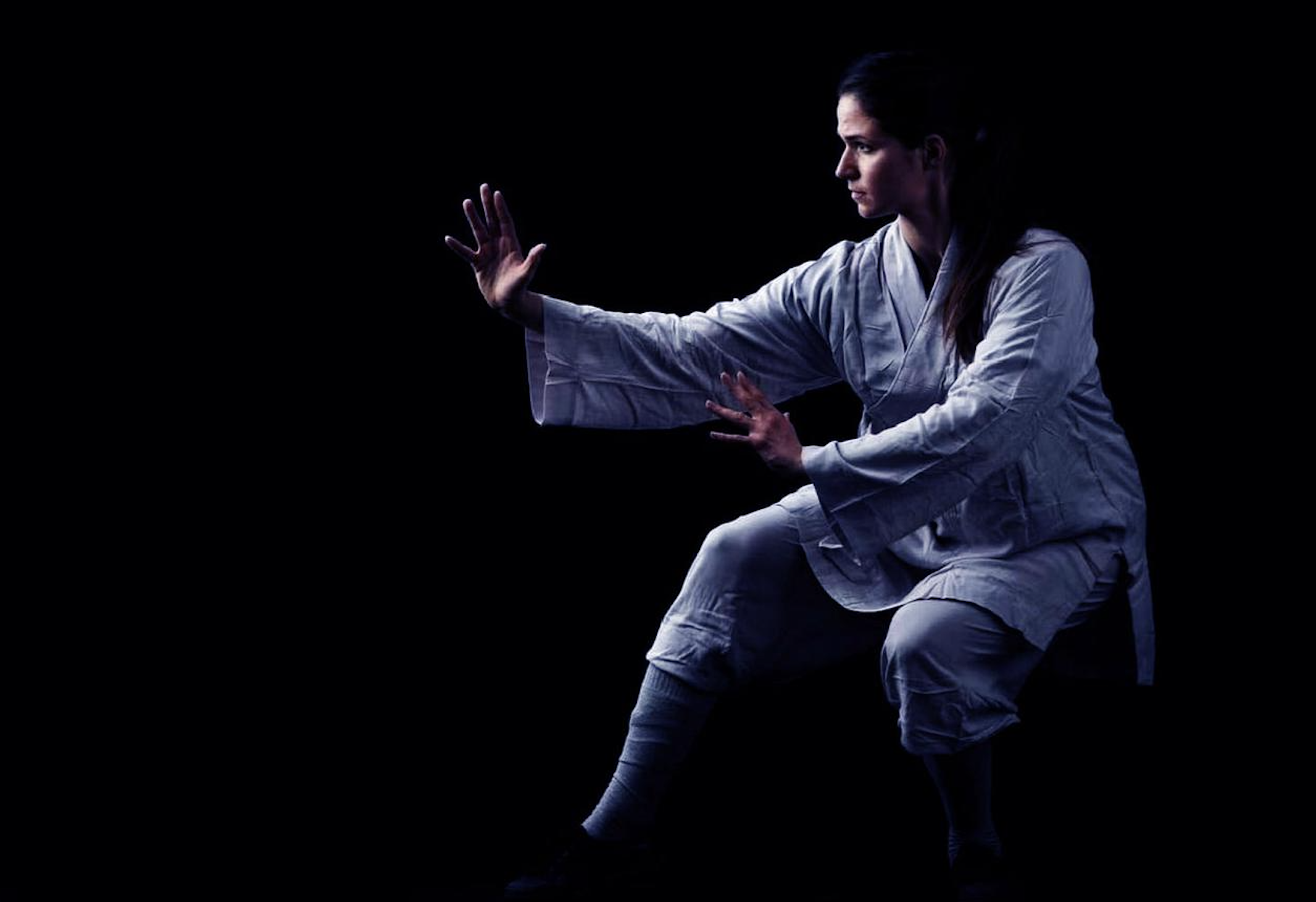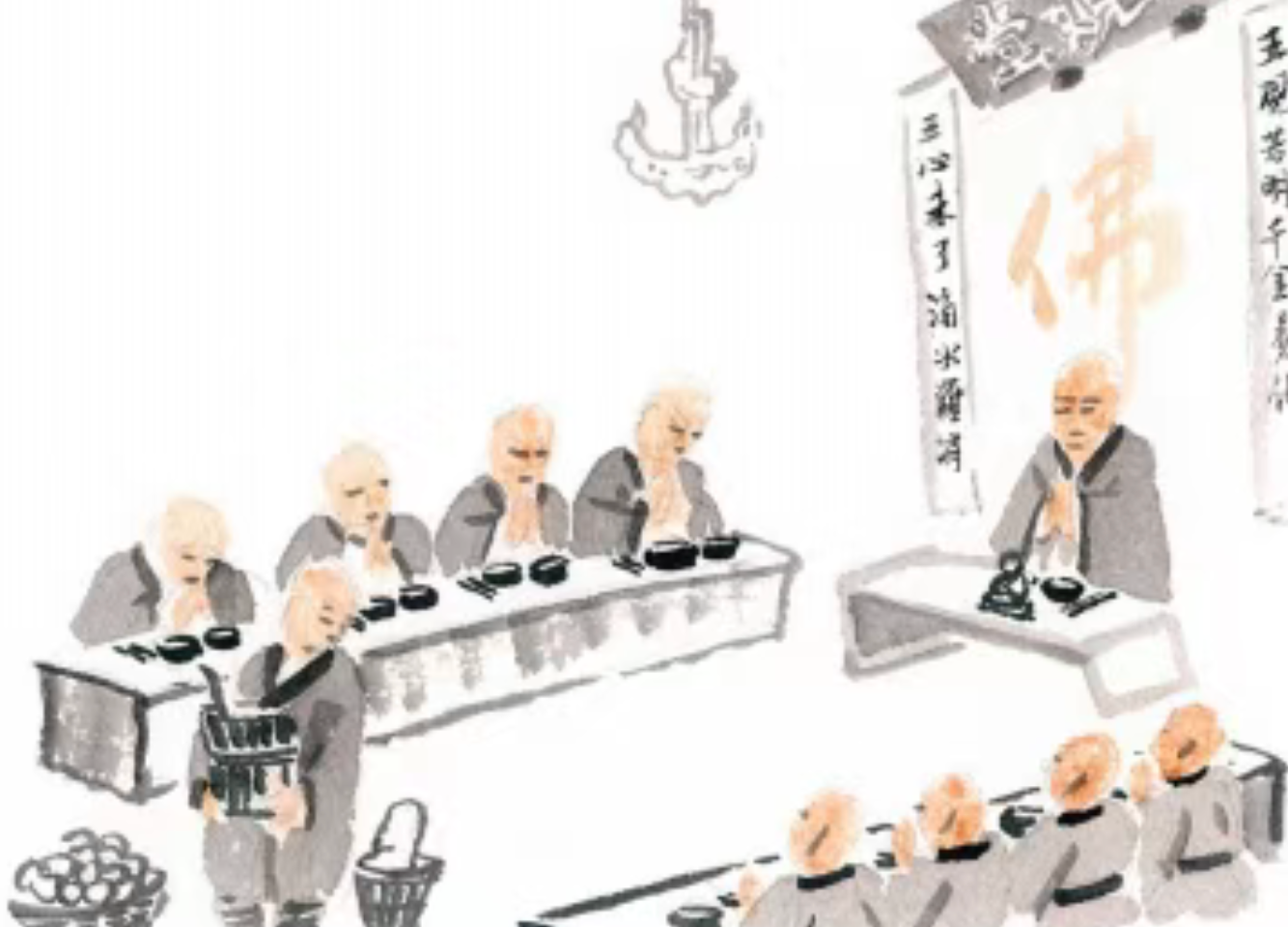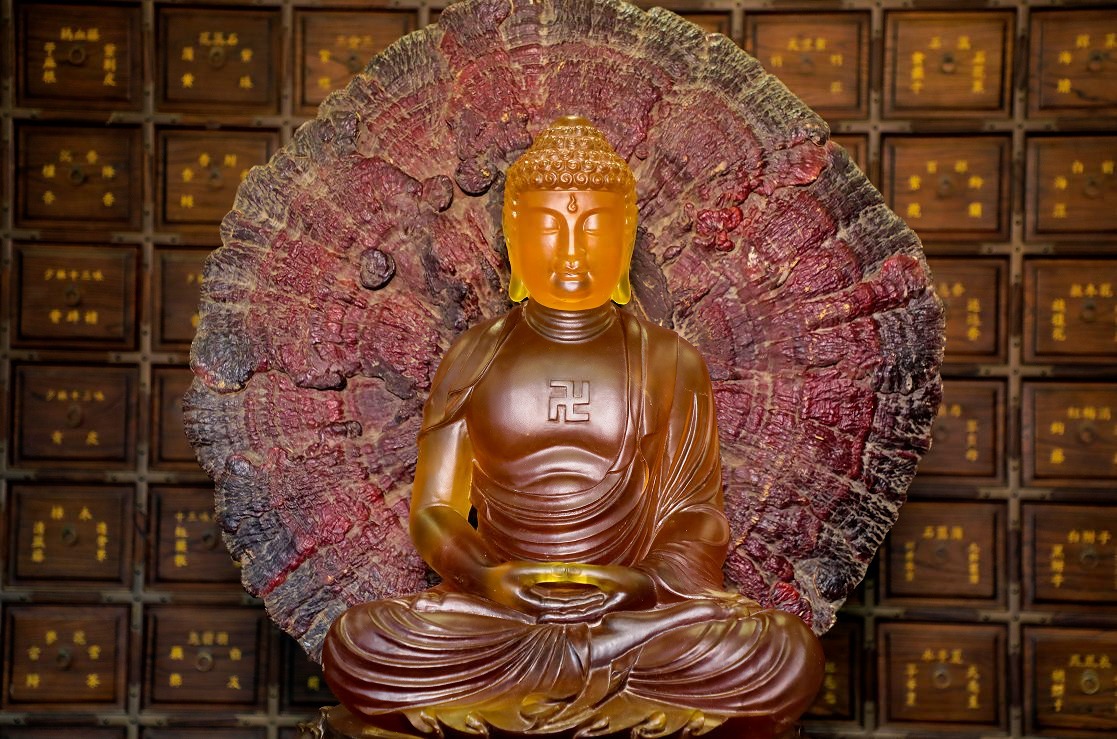“A garment need not be splendid; the heart seeks serenity.”
This old saying is often heard in the courtyards and meditation halls of the Shaolin Temple. It is not merely a proverb but a distilled truth about life. From the Northern Wei Dynasty to the present day, the Shaolin monk’s robe has carried far more than fabric and thread—it carries the weight of tradition, the clarity of discipline, and the humility of inner cultivation.
The robe has silently witnessed generations of monks training in misty mountain forests, reciting sutras in ancient halls, and journeying beyond the monastery walls to teach and serve. To revisit the Shaolin monk’s robe today is to enter a window into the very heart of practice: a reflection of Chan (Zen) and martial virtue, of harmony between body and mind.
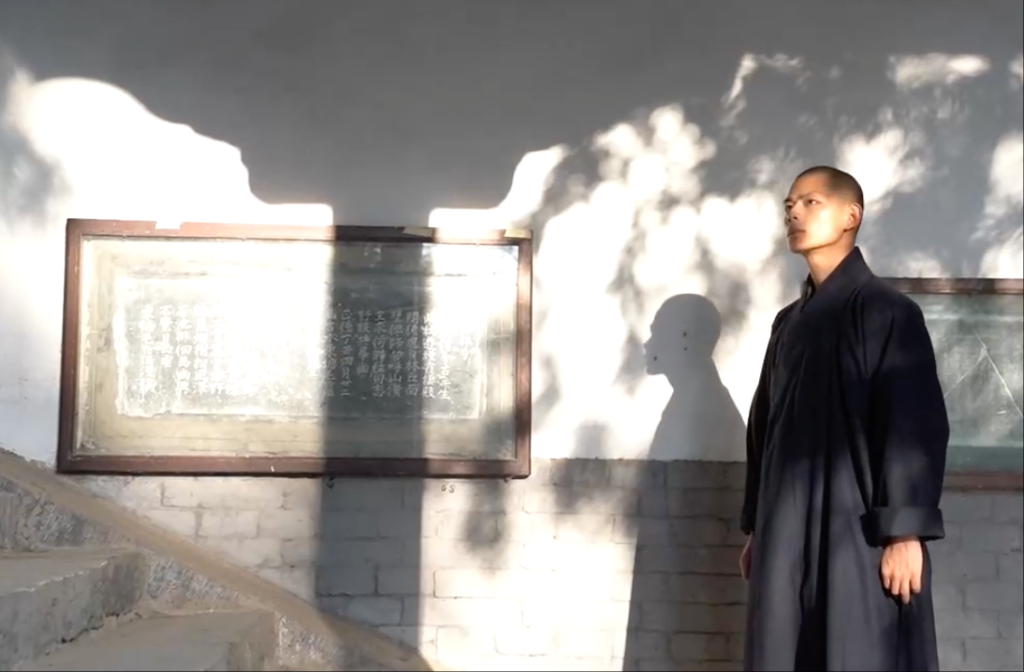
Form and Design: Born of Nature, Guided by Discipline
The design of the Shaolin monk’s robe mirrors the temple’s surroundings and philosophy. Earthy hues—shades of gray, ochre, and deep brown—are chosen not for appearance but for what they symbolize: a return to humility and a merging with the natural world. These colors echo the mountain stones and forests of Songshan, reminding the wearer that all beings are equal and that vanity distracts from the true purpose of life.
The robe’s wide sleeves and flowing hem are not merely aesthetic. They serve practical needs: concealing hand movements during martial practice, allowing freedom of motion when seated in meditation, and adapting comfortably to the shifting seasons of the mountains. The natural fabrics, breathable and durable, protect the monk in winter chill yet move gently with the wind in the height of summer.
Lesson for modern life: Simplicity in clothing invites the body and breath to relax. Overly tight or flashy garments often restrict both movement and mind. Loose, unadorned attire can quietly foster awareness and ease.
Practice: Try meditating or practicing yoga in natural-fiber garments—cotton or linen, simple and soft. Walk outdoors at dawn or dusk in these clothes and observe how each step naturally lengthens the breath and calms the heart.
Color and Inner State: Humility Embodied
The colors of the robe are deeply symbolic. Earth tones root the practitioner to the ground, reminding them to remain steady, balanced, and unattached to the fleeting external world. Brown signifies stillness, warding off distractions and tempering restlessness.
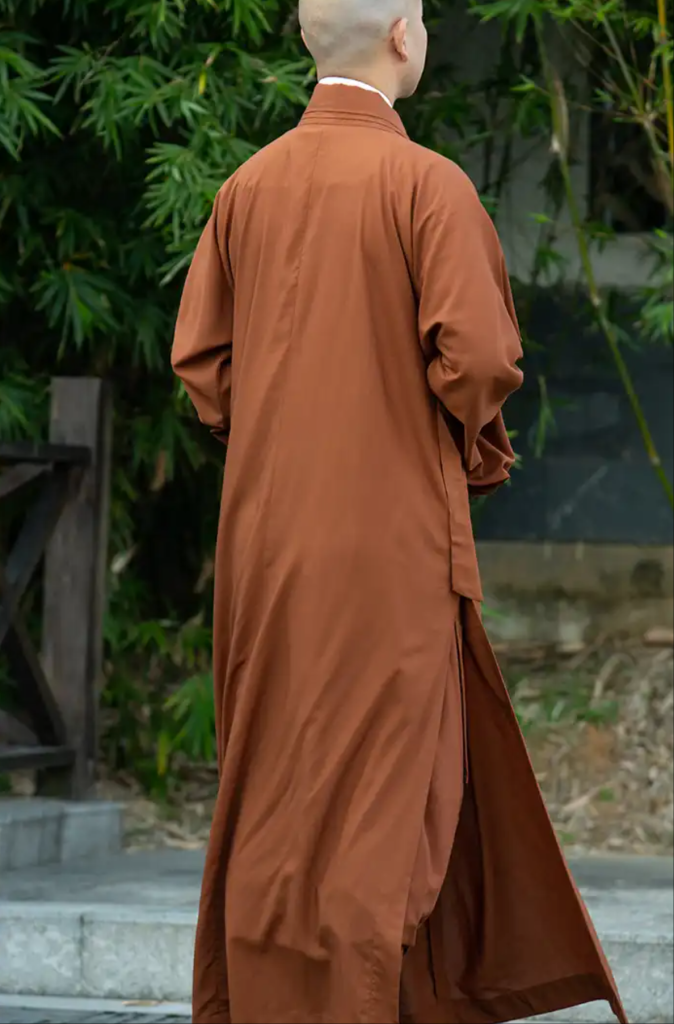
An ancient teaching says, “Clothing is for protection, not for adornment.” The subdued palette of the Shaolin robe is a silent reminder: let go of vanity, dissolve attachment to appearance, and dwell in what is essential.
Practice: Spend a weekend in plain, neutral-colored clothing. Avoid the impulse to coordinate or decorate, and focus instead on breath, movement, and stillness. Notice how the absence of external distractions changes the quality of your awareness.
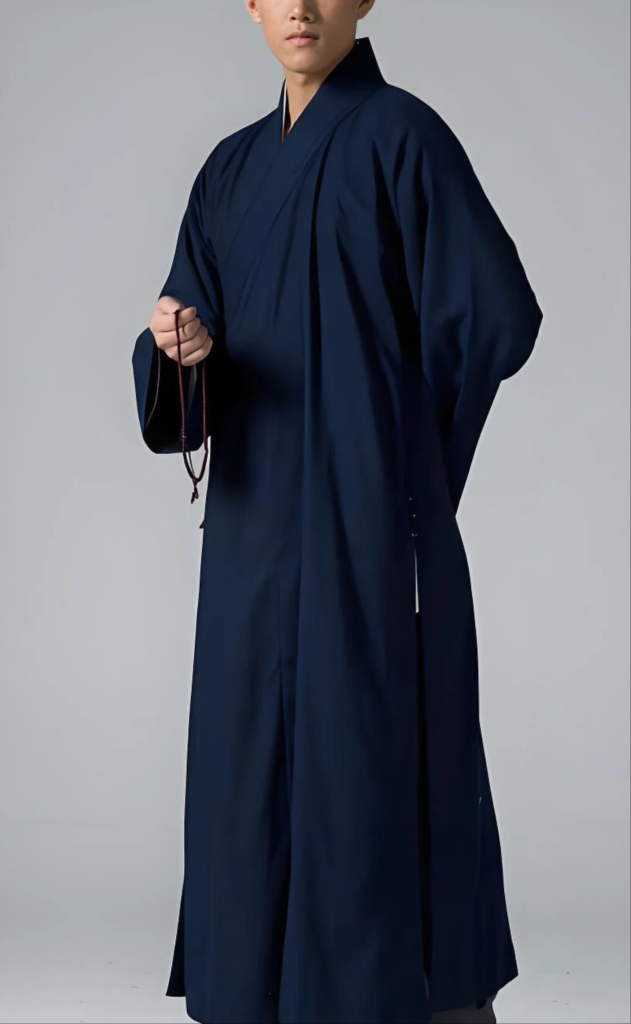
A Symbol Beyond Cloth: The Robe as a Spiritual Reminder
The Shaolin monk’s robe is not simply a garment; it is a mantle of discipline. When a monk dons the robe, he steps fully into the present moment, aware of each action as an expression of the precepts and the teachings of the Buddha.
Its wide sleeves are said to “embrace all things,” and its flowing hem is likened to following conditions with equanimity—moving as the wind moves, soft yet unshaken. During martial practice, the robe’s fluttering fabric is more than visual grace: it is a visible expression of martial virtue, where stillness conquers agitation and gentleness overcomes force.
Lesson for daily life: Use clothing as a cue for focus. Wear a dedicated garment or scarf before meditation, martial arts, or reading sacred texts. Over time, this piece of clothing will carry the energy of your practice and help you settle more swiftly into stillness.
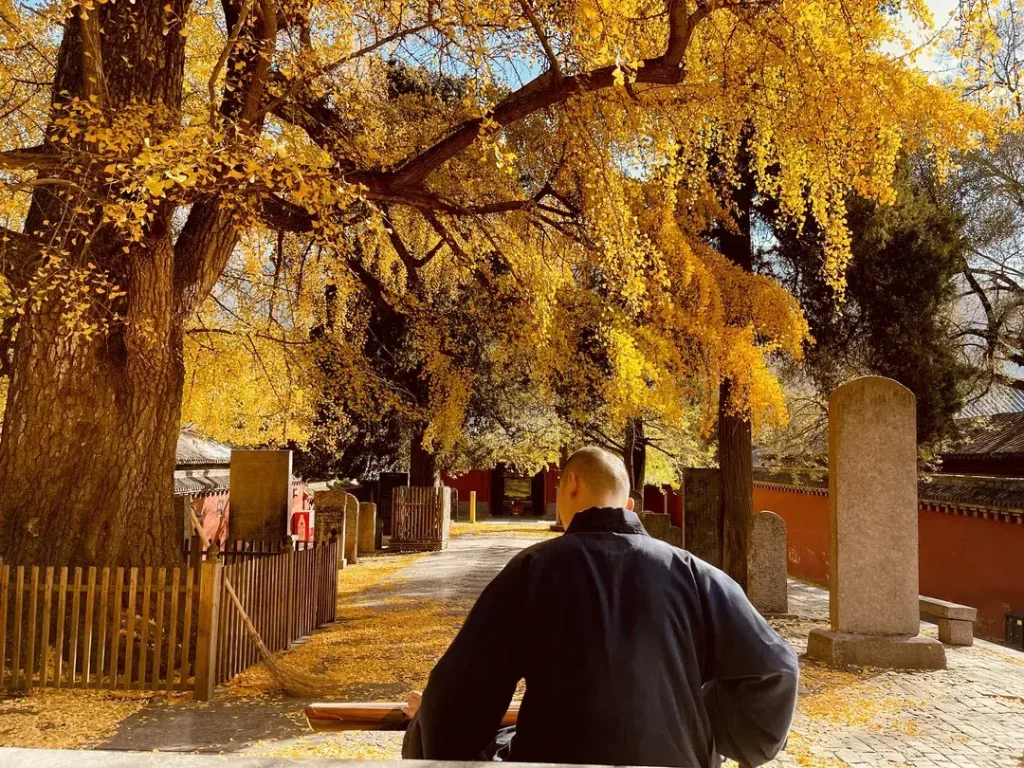
Modern Continuity: Ancient Simplicity in a Fast-Paced World
In today’s hurried society, the principles embodied in the Shaolin monk’s robe are more relevant than ever. The robe reminds us that clothing should serve the body and spirit—not dominate them. Many martial artists, meditators, and even busy professionals are rediscovering the value of simple, comfortable attire to restore harmony and inner balance.
Some modern designs draw directly from the monk’s robe: wide sleeves, front closures, muted earth tones. These elements retain the ancient aesthetic while blending seamlessly with contemporary fashion. This is not a break from tradition but its natural continuation—a rebirth that carries the robe’s quiet dignity into everyday life.
Practice: At the end of a stressful day, change into loose, neutral-colored clothing, even at home. Notice how your breathing slows and your mind softens, simply by creating a small ritual of release.
The Robe and the Bodhi Mind
The Shaolin monk’s robe may appear plain, yet it embodies the richness of a thousand years of spiritual practice. It teaches that true dignity is found not in outward form but in the serenity of the heart.
As an ancient master once said: “When wearing the robe, do not forget the bodhi mind.”
The next time you choose your clothing, remember the robe: its wide sleeves catching the mountain wind, its quiet reminder that humility, presence, and inner peace will always be the finest attire a person can wear.
